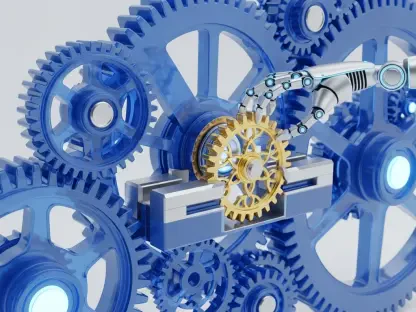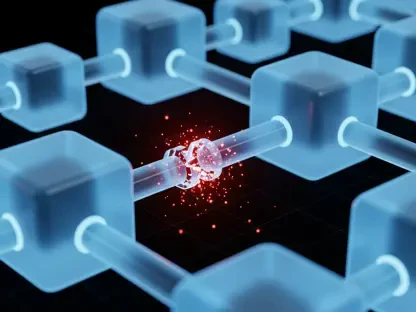In the realm of home automation and robotics, few companies have managed to stir as much interest as Roborock. With its release of the Saros Z70, equipped with OmniGrip Technology, Roborock introduced an innovative way to handle household cleaning. However, as technology enthusiasts investigate this new system, various challenges surface. From the inadequacies in object handling to the often perplexing machine learning behaviors, the OmniGrip seems to present both significant potential and notable limitations.
The Mechanics of OmniGrip
The OmniGrip technology hinges on the arm and claw mechanism designed to pick up and handle household items. The concept centers around automating tedious cleaning tasks, but practical execution faces hurdles. The mechanism struggles with items positioned on carpeted surfaces, often failing to pick them up or recognize them altogether. Moreover, reports of the arm becoming entangled with objects such as kitchen towels and freestanding toilet paper holders underscore practical shortcomings. Such limitations highlight the need for improved adaptability and precision in the current design.
Furthermore, operational quirks like the claw inadequately releasing items after picking them up bring to light the real-world usability issues. Roborock has incorporated safety measures like an emergency stop button and child lock, but removing objects from the claw manually proves cumbersome and highlights gaps in design efficiency.
Navigating with StarSight Autonomous 2.0
The StarSight Autonomous 2.0 Navigation System integrated within the Saros Z70 employs advanced lidar technology, showcasing its capability in complex environments. This feature stands out for its exceptional ability to navigate obstacles in cluttered spaces, offering promising advancements in robotic navigation. However, despite its excellent mapping abilities, occasional failures in object recognition are noted.
For certain tasks, particularly in handling unexpected clutter such as crumpled tissues, the system seems less adept. The requirement for precise placement in designated “blue zones” further complicates user interaction, culminating in instances where the vacuum may prematurely end its cycle with notifications like “Sorting failed.” Nonetheless, the navigation system firmly establishes Roborock’s commitment to secure and efficient home automation, exhibiting compliance with prevailing security standards and easing privacy concerns.
Continual Innovation and Challenges
Roborock remains poised at the forefront of innovation, constantly striving to enhance the functionality and reliability of OmniGrip Technology. Software updates are anticipated to address existing behavioral quirks and augment the Saros Z70’s performance capabilities. Despite promising features, the system currently falls short in handling diverse household scenarios, necessitating ongoing development.
Adapting to an ever-changing technological landscape poses intrinsic challenges, especially in light of shifting consumer expectations and regulatory frameworks. Mitigating these barriers entails substantial refinement of machine learning algorithms and advancing material design to ensure the arm and claw operate smoothly across varied surfaces and object types.
Applications and Use Cases
OmniGrip Technology finds its primary application within the home automation sector, catering especially to consumers seeking streamlined cleaning solutions. Potential use cases extend to sectors prioritizing facility maintenance, lending the technology to innovative possibilities beyond residential confines. Instances where OmniGrip technology has been deployed successfully include pilot programs in automated housekeeping within hospitality settings and maintenance tasks within office environments, though these remain limited considering current practical limitations.
The technology holds promise for industries emphasizing efficiency and precision, encouraging continued exploration and adaptation to meet unique operational demands. Notable implementations can drive improvements to existing automation systems, highlighting areas ripe for future exploration.
Overcoming Limitations
Addressing the deficiencies of the OmniGrip technology presents a multifaceted challenge encompassing technical, regulatory, and market considerations. Robust solutions mandate reinforcing the algorithmic consistency, enhancing grip applicability across irregular surfaces, and generating comprehensive user feedback to inform designs. These efforts, combined with targeted software updates, are critical to overcoming hurdles and aligning OmniGrip technology closer to user expectations.
Looking Ahead
As the trajectory of OmniGrip Technology unfolds, projections emphasize potential breakthroughs in both software and hardware innovations. Insights into advanced surface recognition, improved mechanical stability, and seamless integration into broader smart home ecosystems feature prominently on the horizon. Aligning these advancements with industry trends is crucial for maximizing the social and economic impacts of Roborock’s offerings.
The long-term outlook suggests that with continued refinement, OmniGrip Technology could anchor sophisticated robotic systems that significantly transform household maintenance. Anticipated breakthroughs may pave pathways for broader applications, extending Roborock’s influence in diverse technological realms.
Overall Verdict
In retrospect, Roborock’s OmniGrip Technology presents a compelling yet evolving entry in the automation landscape. While the system’s novel features and navigation expertise underscore significant prowess, practical limitations remain front and center. The drive for improved object interaction and variability in performance across surfaces is apparent.
Monitored progress in refining, enhancing software capabilities, and ensuring robust real-life applications form the crux of future advancements. Continued investment in research and development is poised to unlock OmniGrip Technology’s potential, bridging current gaps into fully realized automation solutions within relevant sectors.









